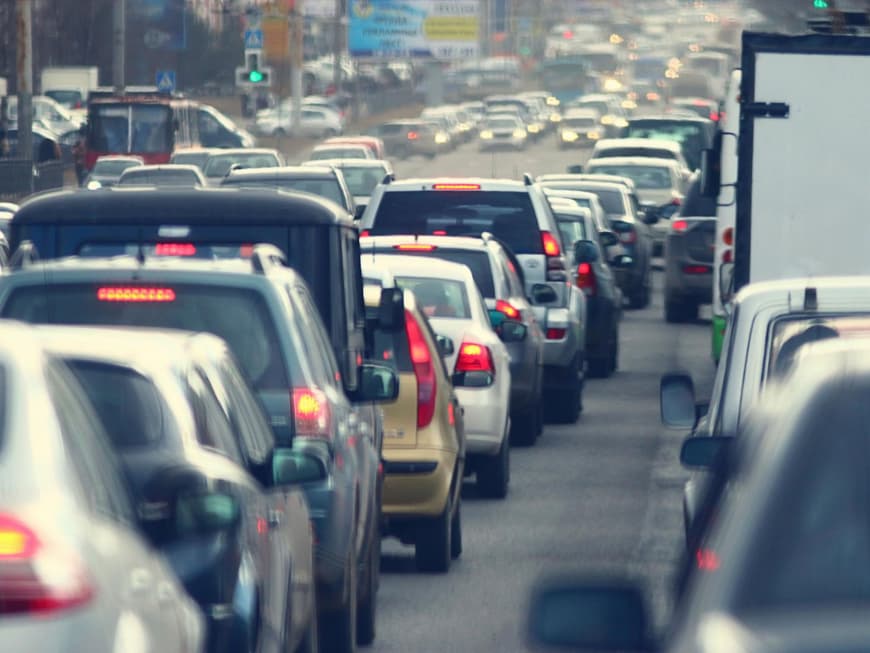
1. noise makes you ill
Three out of four Germans suffer from noise, every 8th child is hearing impaired
It may not be a pollutant, but it is the number one environmental toxin. Noise makes us ill - and can even kill us! Regardless of whether it is aircraft noise, construction noise, road noise or annoying music from a neighbor's apartment, those who are constantly exposed to noise produce more stress hormones. This superfluous excitement not only tugs at the nerves: above all, it damages the blood vessels, and heart attacks and strokes are recognized long-term consequences.
How to protect yourself: Avoid sources of noise as far as possible. In the case of massive construction noise, contact the local authority, in the case of noise from next door, contact your landlord.
2. harmful substances in cosmetics
Almost every 3rd cosmetic product contains harmful chemicals
"Products that come very close to your skin on a daily basis contain a large number of harmful substances that are used as preservatives, colorants and cleansing enhancers," says Dr. Joachim Mutter. For example, deodorant sticks contain aluminum, which can increase the effect of mercury. Glycerine and kaolin (clay) in creams also clog the skin and hinder detoxification. "Some substances in bath additives, shower gels and hair shampoos are known to disrupt cell function," continues Mutter. And: "Diethyl phthalate in perfumes etc. even triggers cancer in rats."
How to protect yourself: "It's best to use organic products," advises the doctor. "This will help you and the environment."
3. toxins in the home
Health hazards within your own four walls
Furniture:"In times of profit maximization, more and more furniture is being produced in low-wage countries - usually without environmental standards," says Mutter. "This is why, for example, carcinogenic formaldehyde can be emitted from chipboard in cheap furniture, which is absorbed through the lungs and skin."
Carpets: "They are not much better, because they are often treated in developing countries with dangerous insecticides that are banned here to protect against pests and fungicides against mold."
Varnishes and paints: also often tricky. This is because some paints and varnishes contain nanoparticles that can easily enter the body as they are small and can be inhaled. Their impact on health is immense.
Clothing: Around 7,000 chemicals are used in textile production. Third world countries in particular use them in production because they are cheap. Some of them are considered "substances of very high concern" under EU chemicals legislation.
Toys: In a recent study, dangerous plasticizers were found in almost every 10th toy. Possible consequences for the little ones: Allergies or asthma.
How to protect yourself: Advice from Dr. Joachim Mutter: "When buying furniture, toys etc., make sure that the products have been awarded the blue environmental label." And: Trust your nose. If furniture or fabrics smell toxic: Hands off! Also important: ventilate regularly.
4. fine dust
Experts warn of pollutants in the air: fine dust is harmful even in small quantities
According to the Federal Environment Agency in Berlin, at least 15,000 people die every year in Germany alone due to traffic-related particulate matter. "The particles presumably cause inflammation in the lungs and activate the immune cells, which then attack other cells in the body," says Mutter.
But it's not just road traffic that can cause high levels of particulate matter. Depending on the heating system, this is also an issue within your own four walls. "For example, heating with wood produces very fine soot particles that are suspected of causing cancer," says the expert. Laser printers also release fine toner dust during each printing process, which enters the bloodstream via the respiratory system.
How to protect yourself: Always keep laser printers, copiers and the like in a separate room with its own ventilation. The following applies to the fireplace: Have it professionally cleaned regularly, make sure there is a sufficient draught and only use well-dried fuel.
5. harmful substances in food
These 5 environmental toxins are most commonly found on our plates
Acrylamide: Is considered carcinogenic and is produced during frying, baking, deep-frying and roasting. Can also be found in potato chips, chips and bread crusts. Tip: avoid excessive browning when cooking.
Mould: Mould can be recognized by the fact that it covers bread, nuts etc. with a whitish "carpet". Dangerous, because: Every mold forms toxic substances. Therefore: throw away moldy food completely, not just the infested areas.
6. electrosmog
One thing is certain: Wherever electricity flows, electromagnetic fields are generated. Whether smartphones, iPads, baby monitors or WLAN - we are exposed to radiation everywhere. Even when the devices are not switched on. Experts argue about the extent to which these pose a risk to our health. However, studies repeatedly prove their negative effect, and Dr. Joachim Mutter, MD, is also certain of this: "Those who are constantly exposed to radiation not only suffer from sleep disorders, tinnitus, dizziness and headaches, the radiation also increases the individual risk of blood pressure fluctuations, depression and even cancer. At the same time, they hinder the body's ability to rid itself of toxins." Researchers even believe that long-term mobile phone users can develop brain, eye and oral salivary gland cancer.
How to protect yourself: Only own as many electrical devices as necessary. And: "Use corded phones whenever possible and keep your cell phone calls as short as possible."
